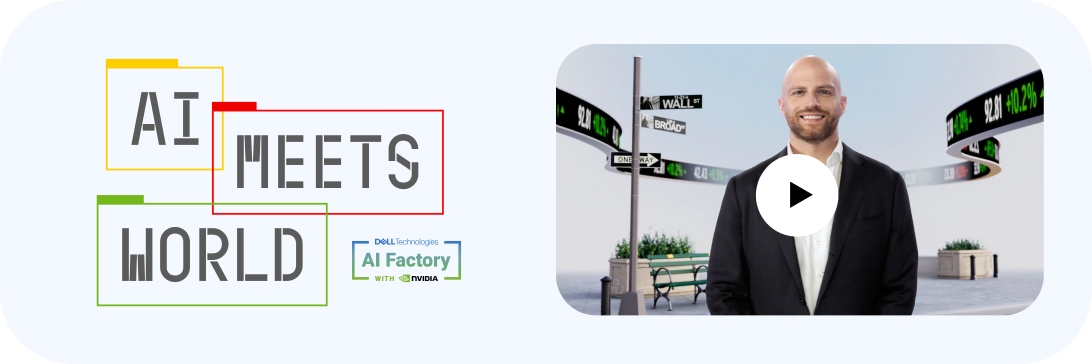How AI Is Transforming the Future of Healthcare
Avatars, robots and sensors will likely transform healthcare in the future. Today, healthcare organizations are using AI to improve operations and deliver better patient care.
Those who have been paying attention to technology trends know there isn’t an industry in the world that AI won’t touch, let alone impact.
Nowhere does this ring truer than in the healthcare sector, where healthcare providers are exploring how to transform their organizations using AI and other emerging technologies. In fact, 63% of organizations said they are actively using AI, with another 31% assessing or piloting AI projects, according to NVIDIA research.
In the spirit of transformational potential, let's consider what a future healthcare appointment might look like.
The future of healthcare is contextually aware
Imagine a patient walking into a hospital where they are greeted by an intelligent avatar that has at its disposal the context of why the person is there.
In the exam room, the doctor narrates the exam aloud as ambient technologies, including sensors, cross-reference the information with data from the patient’s electronic healthcare record and other relevant knowledge bases to provide potential diagnoses and treatment recommendations.
These capabilities augment the workflows of physicians, nurses and other healthcare professionals, reducing errors that can result in patients being readmitted after discharge.
Such an immersive experience is something that will be broadly available in the future, according to Rory Kelleher, Global Head of Business Development – Healthcare and Life Sciences, NVIDIA.
“It’s an incredibly exciting future that combines computer vision and robotics and large language models and avatars,” said Kelleher. “Perhaps it could be completely unrecognizable to what it looks like today.”
AI is alive and thriving in healthcare
While that revolutionary reality may lie farther out on the horizon, the current state of healthcare technology innovation is still exciting, if a bit more evolutionary.
Dell and NVIDIA worked with Northwestern Medicine to build Automated Radiology Interpretation and Evaluation System (ARIES), a multimodal AI foundation model that rapidly reviews radiology images to provide radiologists with diagnostic findings and anomalies that would normally require hours of review. ARIES was found to improve the radiologist workflow by 40%.
“That’s 40% more time to either work directly with patients, or get to more cases,” Kelleher said. ARIES highlights how AI can be used to augment radiologists’ workflows and free them up to focus on other critical tasks.
The solution is fueled by the Dell AI Factory with NVIDIA, a modern approach to deploying AI that incorporates Dell’s AI infrastructure and NVIDIA’s accelerated computing, supported by turnkey strategies and automated workflows. Northwestern Medicine’s deployment comprises a cluster of four Dell PowerEdge XE9680 servers powered by eight NVIDIA H100 GPUs running on premises.
Such human-machine collaboration underscores the symbiotic relationship between AI and human workers.
Dell AI Factory with NVIDIA also plays a prominent role at Essen University Hospital (UK Essen), which leans on generative AI to provide multi-language capabilities for chatbots that help the hospital address talent shortages of medical professionals and allow patients to register, provide information and receive answers to questions in their native languages.
Since deploying generative AI with Dell AI Factory with NVIDIA, UK Essen has seen a 50% reduction in the time its computer systems take to execute inferencing—a critical stage in which AI analyzes and processes data to generate meaningful information. The generative AI outputs help UK Essen provide more personalized patient care to achieve better outcomes.
“We want the most powerful NVIDIA accelerated computing available in the PowerEdge XE9680 servers because of the complexity of our generative AI use cases, where we train and use LLMs and multimodal LLMs that incorporate images, documents and language processing,” said Moon-Sung Kim, CTO of UK Essen's Institute for Artificial Intelligence in Medicine.
Fueled by changing patient expectations for virtual care, as well as new clinical and business realities, healthcare providers are eager to lean into technology innovation. The future of healthcare may well include avatars, robots, and other technologies currently considered to be the realm of science fiction.
For now, healthcare organizations working with Dell and NVIDIA are engaging in scalable AI deployments designed to automate operations, improve productivity and enhance patient interactions.
This helps healthcare organizations provide more personalized clinical experiences and deliver better patient care—outcomes that are as critical today as they will be in the future.
Learn more about the Dell AI Factory with NVIDIA here.
1 State of AI in Healthcare and Life Sciences: 2025 Trends, NVIDIA, March 2025

